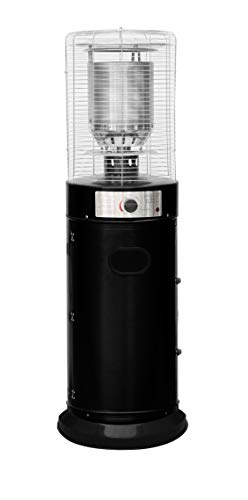20 Myths About Patio Heating Systems: Busted
Patio Heating Systems: A Comprehensive Guide
As outdoor home evolve into extensions of our homes, creating a comfortable and inviting environment is paramount. One of the most effective ways to achieve this comfort is by implementing patio heater. visit my home page allow friends and families to enjoy their outdoor areas year-round, despite the chill of the night air. This post will explore various patio heater offered, their features, advantages, and important considerations for choosing the best one.
Kinds Of Patio Heating Systems
Patio heater been available in different types, each with its own special characteristics. Below are a few of the most common types:
Type
Description
Pros
Cons
Electric Patio Heaters
These heaters operate using electrical power and can be found in wall-mounted, portable, and freestanding models.
Easy to set up and use; instant heat; safe; low upkeep
Restricted heat range; may increase electrical energy costs
Gas Patio Heaters
Generally powered by propane or natural gas, gas patio heaters provide substantial heat output and can cover big areas.
High heat output; can last longer than electric designs; perfect for big events
Requires gas supply; can be less portable; security worry about gas leaks
Infrared Heaters
Infrared heaters emit thermal radiation that directly warms things and people instead of the surrounding air.
Efficient; immediate heat; minimal heat loss; environmentally friendly options offered
Restricted area of effect; initial cost may be high
Fire Pits
Typically made of stone or metal, fire pits provide heat and ambiance, creating a relaxing atmosphere.
Natural ambiance; flexible (cooking alternative); collect around for social interactions
Security dangers with open flame; need wood or propane supply
Patio Umbrellas with Heaters
These are umbrellas fitted with integrated heating aspects, best for shaded areas.
Hassle-free; combines shade and heating; portable
Less effective in windy conditions; restricted area; can be expensive
Key Features to Consider
When choosing a patio heater, it is important to assess various features based upon personal preferences, budget, and outdoor space requirements. Here are some aspects to think about:
Heating Capacity: Measured in BTUs (British Thermal Units), this figures out the heat output of the heater. Select a heater with adequate BTUs for your outdoor size.
Fuel Type: Decide in between electrical, gas, or wood-burning options based upon convenience, accessibility, and effectiveness.
Mobility: If mobility is essential, try to find light-weight or wheeled designs for simple transport.
Maintenance: Consider the upkeep required for each type. Electric heaters typically require less upkeep than gas or wood options.
Security Features: Look for systems with safety cut-offs, protective screens, and materials that can stand up to outdoor conditions.
Benefits of Patio Heating Systems
Patio heater use several advantages, allowing house owners to maximize making use of their outdoor living areas. Some advantages consist of:
- Extended Outdoor Use: Heaters permit for more time invested outside, even during cooler seasons.
- Increased Comfort: Provide a warm and inviting environment for events, parties, or peaceful nights.
- Boosted Aesthetics: Many heater designs add a stylish touch to outdoor decoration.
- Increased Property Value: Homes with well-equipped outdoor spaces might draw in greater worth and interest potential buyers.
- Versatile Options: With various designs and styles available, there is a heating service for every single kind of outdoor setting.
FAQs About Patio Heating Systems
1. How much does it cost to run a patio heater?
- Electric Models: This depends on the regional electricity rates and use time. On average, running an electric heater can cost in between ₤ 0.10 to ₤ 0.50 per hour.
- Gas Models: Propane costs vary, but a 20-pound tank normally lasts about 8-10 hours, costing around ₤ 20-₤ 30 to fill.
2. Are patio heaters safe to use?
The majority of modern patio heaters are developed with security features. However, it's vital to follow security procedures, such as sticking to clearances from flammable objects, using on stable surface areas, and ensuring appropriate ventilation for gas designs.
3. Do patio heaters work in windy conditions?
Many patio heaters can provide warmth in light winds, however strong gusts can lower their efficiency and safety. For high-wind locations, consider more steady designs or use wind shields.
4. Can I use a patio heater inside?
Using outdoor heaters inside your home is not advised due to carbon monoxide dangers, especially with gas heaters. Always validate your heater's intended usage standards before setup.
5. How do I maintain my patio heating system?
Regular upkeep is vital to guarantee durability and performance:
- For electrical heaters, inspect and clean up the heating component regularly.
- Gas heaters need to have their gas lines inspected for leaks and filters cleaned up.
- Fire pits ought to be cleaned up after use and checked for any residue or ash accumulation.
Patio heating systems play a crucial role in changing outdoor spaces into comfy and welcoming environments. With a range of options, each with unique benefits and functions, property owners can select the ideal system based upon their needs, choices, and particular outdoor conditions. By buying a reputable patio heater, one can optimize enjoyment of their outdoor space throughout the year. Whether hosting summer season barbecues or cozying up on cool evenings, a warmed patio welcomes togetherness, relaxation, and pleasure, making it an important addition to any home.
